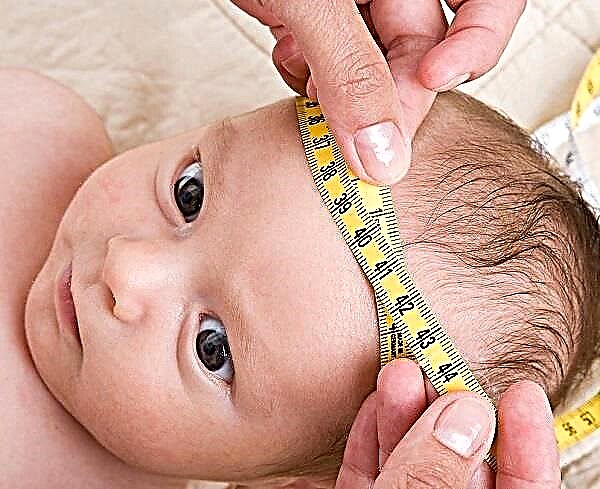Is Paracetamol allowed for nursing mothers?
Paracetamol is the most common drug used for colds. But there is a different situation that every nursing mother may face. Such a situation is lactostasis - stagnation of milk in the ducts of the breast.
More often, lactostasis is observed in primiparous women, as well as with improper attachment of the baby to the breast and the ineffectiveness of the sucking process by the baby. A woman has an engorgement of the mammary gland, more often, on the one hand, an increase in temperature to high numbers.
In such cases, paracetamol is allowed during lactation, but must be taken with the permission of a doctor, and you must also follow some rules for taking the drug. Paracetamol with HB (breastfeeding) is taken at temperatures above 38.5 degrees, observing the interval between doses of at least 4 hours. Also, the number of tablets per day should not exceed 4.
What are the effects of Paracetamol
Paracetamol is widely used in medical practice. The main one is the antipyretic effect. Paracetamol is approved for use by people with fever of all ages. Also, to reduce the temperature, the drug Ibuprofen is used, which is most effective during fever, having an analgesic and anti-inflammatory effect.
Some experts recommend alternating these drugs during the day for the best effect, but studies have shown that there is no difference between the combined use of drugs and their intake separately.
A single dosage for paracetamol is 10-15 mg / kg, for ibuprofen 6-10 mg / kg. Recommendations that if after the first dose of the antipyretic agent there is no improvement in the condition, then it is necessary to give the next dose, are fundamentally wrong.
A decrease in temperature can be observed after 2 doses, but only in the first 3 to 4 hours. Such treatment does not affect the temperature in the future. It is also important to observe a single dosage, since an increase in such can negatively affect health.
Paracetamol has little pain relief, but it is only effective for mild to moderate pain. People with osteoarthritis can take paracetamol for pain relief. But today there are the most effective principles of therapy for this disease. Paracetamol can relieve mild osteoarthritis pain, but does not affect inflammation, swelling, redness, or other symptoms of the disease.
This drug in combination with caffeine is used for headache, migraine. The combination of paracetamol with nonsteroidal anti-inflammatory drugs may be effective in relieving postoperative pain.
Patent ductus arteriosus is a pathology that is often found in newborns. The arterial duct should close before the baby is born, but if this does not happen, then paracetamol can be used in treatment. Non-steroidal anti-inflammatory drugs are also used, but paracetamol has fewer side effects.
Paracetamol is an excellent alternative as an antipyretic, analgesic agent in cases where NSAIDs (non-steroidal anti-inflammatory drugs) are contraindicated for one reason or another.
General indications for the use of Paracetamol
Paracetamol, first of all, is prescribed when the temperature rises during various infectious diseases, as well as during lactostasis. This drug can be used for pain syndrome of various origins (toothache, headache, joint pain, postpartum, postoperative pain, trauma, burns).
In what cases is Paracetamol indicated for breastfeeding?
Paracetamol while breastfeeding can be used for the same indications as indicated above. Chronic diseases, which implies a course of taking this drug, should be discussed directly by the doctor. And only a specialist can select the correct treatment, which should not negatively affect the child and will benefit the mother.
Short-term use of paracetamol for infectious diseases and lactostasis in the mother does not affect the growth and development of the child. Paracetamol while breastfeeding for headache may take place as a temporary treatment.
Rules for the use of Paracetamol while breastfeeding
The most popular antipyretic for breastfeeding is the drug Paracetamol.
Paracetamol during lactation is prescribed at a temperature of more than 38.5 degrees. Taking this drug must comply with the general rules for use.
- 1 tablet of paracetamol - 500 mg is a single dose for a nursing woman.
- It is recommended to take the medicine after feeding in order to minimize the concentration of paracetamol in breast milk.
- It is important to maintain an interval between doses of the drug at least 4 hours.
- You should also take no more than 4 tablets per day.
- The course of taking paracetamol should not exceed 3 days.
Often, the temperature in infectious diseases and lactostasis normalizes over a given period of time. If a nursing mother has been worried about a fever for a long time, it is recommended to urgently consult a doctor.

Contraindications for the use of Paracetamol for HB
Breastfeeding is not a contraindication for paracetamol use. Also, during the illness, you should not transfer the child to the mixture. It is not even recommended to start artificial feeding while taking paracetamol.
Contraindications for the use of this drug include an allergic predisposition or intolerance to the components of the drug, severe impaired liver and kidney function (Paracetamol has some hepato- and nephrotoxic effects), a decrease in hemoglobin concentration (anemia).
What besides paracetamol?
In addition to paracetamol, in order to achieve an antipyretic effect during breastfeeding, a drug from the group of non-steroidal anti-inflammatory drugs, Ibuprofen, can be used.
Safe antipyretic drugs for a baby while breastfeeding are Ibuprofen and Paracetamol.
The concentration of Ibuprofen in breast milk is low and does not affect the growth and development of the baby. The drug is recommended to be taken immediately after feeding with water. Taking medications after feeding reduces the concentration of the drug in breast milk.
There are also rules for Ibuprofen. The maximum daily dosage for the drug should not exceed more than 4 tablets or capsules. It is important to maintain an interval of at least 4 hours. The course of admission should be short-term.
What can not be combined with paracetamol?

Some women who are breastfeeding may take any medication for a long time. Chronic illnesses require constant medication. The use of such drugs may coincide with the intake of Paracetamol. But the latter cannot be combined with some drugs that you need to know about. Liver microsomal enzyme inducers (Phenobarbital) are not recommended to be taken together with Paracetamol.
Both drugs have hepatotoxic effects, but alone, the drugs may not show this negative effect. But as soon as the combined intake of these drugs is observed, the adverse effect on the liver increases.
Preparations from the group of anticoagulants (Heparin, Warfarin), together with Paracetamol, are able to change blood parameters that affect coagulation.
An antipyretic agent may not have the proper effect on fever due to inadequate absorption. The drug is characterized by the lack of assimilation when used with anticholinergics (Atropine, Ipratropium bromide) or with activated carbon.
Also, Paracetamol can reduce the antipyretic and analgesic effect due to the fact that it is quickly excreted from the body. This situation is observed when taken together with oral contraceptives. If the temperature rises, the doctor needs to talk about her chronic diseases, as well as about the drugs that the woman is currently taking. Some combinations of drugs do not bring the desired effect or may even harm both the nursing mother and the baby.
Possible side effects and overdose
Side effects are rare. From the gastrointestinal tract, nausea, vomiting, and abdominal pain may appear. Long-term use of Paracetamol provokes the development of a hepatotoxic effect. In this regard, there is a decrease in liver function.
If the patient had an allergic predisposition to this drug, then a rash, redness, swelling, itching may occur on the skin. A long course of Paracetamol impairs renal function. Long-term use of this drug can affect blood cells, reducing their concentration, in particular hemoglobin, erythrocytes, platelets.
Overdose is very dangerous for the liver. Incorrect intake of Paracetamol leads to the death of liver cells and tissues. The degree of damage to this organ depends on the duration of the drug and the dose.
Also, the patient has nausea, vomiting, lack of appetite. If these symptoms appear, an urgent need to consult a doctor. Treatment of an overdose involves a gastric lavage procedure, a cleansing enema and the use of activated carbon.
How to help yourself with a cold. Tips for nursing mothers

The main question in the event of acute respiratory diseases that worries mothers: is it possible to breastfeed? The answer is yes, you can, but you need to use the drug, observing certain rules.
Physical methods of cooling
Physical cooling methods can be used to lower the temperature. But forget about rubbing with vodka or vinegar! These methods are dangerous and poorly effective. The temperature of the skin decreases with this rubdown, but the internal organs maintain their original temperature or even increase.
A safe physical method is to cool the forehead with a wet towel at room temperature. Also, this method reduces headaches.
Rinsing the nose
In acute respiratory infections, patients often experience nasal congestion. This symptom can be fought by frequent flushing of the nasal passages with saline or sea salt solution (Aqualor, Aquamaris). This procedure can be repeated every 3 to 4 hours, depending on the patient's condition.
It is not recommended to use vasoconstrictor drops, because they are addictive and their effect is short-lived. Irrigation with sea water can also relieve swelling of the nasal mucosa and facilitate nasal breathing. Also, with ARVI, patients often have a sore throat.
Mouthwash
To relieve discomfort, it is recommended to rinse the mouth with antiseptic solutions (Chlorhexidine, Miramistin) or herbal solutions (Chamomile, Sage). You should rinse regularly and more frequently for a faster recovery.
To relieve a sore throat, there is a drug Lizobact, which is approved for pregnant and lactating mothers. During illness, patients should drink more fluids to quickly remove toxins from the body.
Doctor call
If a nursing mother's temperature rises to high numbers, then you must immediately call a doctor. Only a doctor can make a correct diagnosis. Breastfeeding mothers can face more serious illnesses. For example, tonsillitis, pneumonia, or kidney inflammation. Only a thorough examination will help to find out the cause of the fever. Also, the patient may require the appointment of additional research methods.
For pneumonia, chest x-ray. After such a procedure, it is not necessary to express milk, because X-rays do not penetrate into breast milk and cannot affect the baby. With pyelonephritis, a general urine test and an ultrasound examination of the urinary system are necessary.
These diseases require immediate antibiotic therapy. But even antibiotics are not a reason to switch to artificial feeding. Antibacterial drugs, in particular Flemoxin, which can be prescribed for pyelonephritis, angina or pneumonia, can be used in breastfeeding women and is safe for the baby.
Lactostasis treatment
A woman may have lactostasis (milk stasis), which must be properly treated. Without appropriate therapy, the patient is at risk of developing mastitis. Inflammation and necrosis of breast tissue implies only surgical treatment.
This arrangement will adversely affect both the mother and the child. The latter will have to switch to artificial feeding, since the mother will not be able to perform her functions in a hospital environment. Also, during a long break of GV, milk gradually decreases and the lactation period can completely stop. Lactostasis is manifested by an increase in temperature, chest pain. Pain syndrome is often one-sided.

With lactostasis while feeding the baby, the temperature can decrease without the use of antipyretics.
A breastfeeding woman can independently feel the lumps in the breast. Such formations indicate stagnation of milk in the lobules. The localization of the seals indicates how best to position the baby during feeding. It is important to apply the baby to the breast as often as possible for better resorption of stagnant formations.
Warm compresses are not recommended during lactostasis because they increase milk flow. You should also avoid hot showers, baths, hot tea. Drinking a lot of liquid also increases milk volume. Cool compresses should be applied to the affected chest. This procedure relieves swelling and improves the patency of the milk ducts.
It is recommended to do a light massage during feeding, which also helps to eliminate stagnation. Some experts recommend smearing the affected breast with Traumeel ointment. This drug is homeopathic and is used for various injuries. In the case of lactostasis, it is necessary in order to relieve edema.
Milk stagnation most often occurs due to wearing uncomfortable and squeezing clothing, and sleep on the stomach and on the side can lead to stagnation. Lactostasis occurs in lobules, the outflow of milk from which is often difficult.
During this period, it is important to constantly offer the affected breast to the baby. And from the other to express milk to a state of relief. The position of the baby during feeding should be constantly changed until the woman understands at which position the compaction decreases. It is strictly forbidden to press on the chest, because the milk ducts can be damaged.
Conclusion
Acute infectious diseases in a nursing mother raise many troubling questions. Women are worried about whether medication can be taken while breastfeeding. One of the drugs that is in doubt is paracetamol. It is he who is most used during illness.
Also, nursing mothers need to know about the possibility of taking Paracetamol, because consulting a doctor can be difficult in some situations. Respiratory diseases and other pathologies that are accompanied by fever are not a reason to switch to artificial feeding.
You should take only those drugs that are approved for use by lactating women. It is always necessary to weigh the potential risks and benefits to the mother. And also remember how important breast milk is for a child for the formation of immunity.



